I'm teaching this class and it's kind of a joke, because you can do whatever you want. Like, you're here. I'm giving you a guideline to what I'm doing. This is how I'm rolling on the floor today, this is how it looks when I do it. It doesn't have to look the same when you do it.
You're listening to Burnt Toast! This is the podcast where we talk about diet culture, fatphobia, parenting, and health. I'm Virginia Sole-Smith and I also write the Burnt Toast newsletter.
Today I'm chatting with Lauren Leavell! Lauren is a trainer and fitness instructor based in Philadelphia, and the creator of Leavell Up Fitness a body positive and weight-inclusive fitness network that makes working out accessible and fun.
I am a big fan of Lauren's work. I have been doing her barre and strength training classes for the last few months. To be clear: I pay for her classes, I am delighted to support her work. This isn't sponsored content. I just really love Lauren's approach to exercise and movement. And I wanted her to come chat with us a bit about that philosophy and her experiences navigating fitness culture and finding such a new, and frankly revolutionary, way through it. So here's Lauren!
Episode 80 Transcript
Lauren
My name is Lauren Leavell. I am a Black woman. I use she/her pronouns. And I'm located in the city of Philadelphia. I was born and raised in LA but moved to Philadelphia for love. And I am a fitness instructor.
I consider myself a weight neutral fitness instructor, meaning the goals and the language that I use is not around weight loss and bodies and aesthetics. I really am not too worried about what people are doing when they're not with me, because they're only with me for pretty much 45 minutes every time they see me. And I really focus on joyful movement and connectedness to your body.
Virginia
For everyone listening: I am a Lauren super fan. I've been doing her barre classes for a few months now. So this is a big thrill for me to get to hang out with you for a little bit! I'm just going to fangirl for a moment and say I have done a lot of other barre classes and it is very hard to find—particularly with barre, but in every fitness arena—a class where there is not something I have to be like “I didn’t want to hear you say that.” To realize this is a safe space and there's none of that and it's just not part of what we're here to do is such a relief. I just really want to thank you for doing that.
How did you get into this and what makes you determined to do it in this different way that you're doing it?
Lauren
Yeah, you are so welcome! I tend to attract people who are just like me, obviously. You get this theme going with the people that you have come into my membership or into my social media, that they're interested in what I'm interested in. So it's become a really good group. I really appreciate the people who are in there.
I started working out at 19—I just turned 31, so that's a little math problem there. I started for the reasons that a lot of 19-year-old women, in particular, start working out. And I was not an athletic child. I might have been. I came from a family, a long line of non-athletic people.
Virginia
I relate to this deeply.
Lauren
It was never a thing. Like, we weren't sports people. We weren't athletic people. My family, their forms of movement are cleaning and gardening. That's their jam. And that's real! Like, that is legitimate, but they just weren't into anything else. So the children were also not into anything else.
But yeah, I started working out and I kind of fell in love with movement, separate from the unhealthy and disordered other things that I was doing. So those two things really never tainted each other. I was like, “Oh, I love going to the gym. Even though I'm doing all this other stuff that probably is very unhealthy for me, this still feels fun. I feel really connected to this.”
When I started to recover and started to realize that I didn't want to live that way anymore, I never was one of those people who was like, I have to stop exercising. I was like, no, I actually still really, really, really enjoy this. And this is really something that I love. And I think that it can be done without the pressure and the standards and the goals that I was using on myself. There's got to be another way.
So I started doing that and then I went to a barre class. It totally kicked my butt. And then I was like, what is barre? And I started digging and I was like, “Oh this doesn't look like me at all.” And I took that as a challenge. So I decided to get certified because I was like, there's gotta be people out here who want to take this class, who wouldn't feel comfortable if they didn't have an instructor who maybe didn't look like them? Or did not use that language—“toning” and “lengthening” and “shredding” and all the other things. I didn't want to do that.
I was like, what if people just want to come here and have fun and get their butts kicked like I did? And so that's where it started. And then I got certified as a personal trainer, and I have a corrective exercise certification under that which really just was a little bit more in depth on how to help folks who are coming off of injuries or any other thing, which is really important to me to try to make things as accessible as possible in a group fitness class, which is kind of an oxymoron. But like we're doing, we're doing our best over here to make as many accommodations and I'm fully aware that not everyone is going to find something every class that clicks with them.
Virginia
I'm interested in separating your love of moving your body from the diet culture/disordered piece of it. There are so many layers to that, right?
I'm someone who also grew up very un-athletic, in a fairly un-athletic family, and just didn't think of myself as someone who enjoyed movement, period. So then I got into it in a really diet-y way. I've been on this process of, do I even like it? Can I like it now that I'm not doing it in this other context? I'm just so interested that you were able to hold onto what you did love about it and strip away the other stuff. I think that's a really tricky process for a lot of us. I'd love to hear a little more about what made you realize this part of it is good for me, even though this other stuff doesn't serve me.
Lauren
I do hear that all the time. I have a lot of folks who are in membership who are like, this is like my first try into into movement again after I set it down for a while, after I had an injury.
Virginia
Because that’s really necessary sometimes. Like, really necessary.
Lauren
Oh, totally. I don't want to gloss over that as a step for many people. And I have many, many, many close friends for whom that was their step. They were just like, “peace, see you never, exercise!” For me, I don't know if it was the feel good endorphins, I don't know if it was a thing that made me feel super independent and super connected—I didn't feel like I grew up having a good communication with my body. I felt like everybody else's outside input and communication about my body was the narrative around my body. And when I was exercising, I felt like that didn't matter. Because they weren't the ones picking up the weights. They weren't the ones walking on the treadmill. They weren't the ones doing all those things. It was really a form of independence for me, and reconnection, which is what I try to stress to people when they're moving with me.
I'm teaching this class and it's kind of a joke because you can do whatever you want. You're here, I'm giving you a guideline to what I'm doing. This is how I'm rolling on the floor today. This is how it looks when I do it. It doesn't have to look the same when you do it. Because I want people to feel 45 minutes of connectedness with their body or 45 minutes of trust in who they are.
And I think that's really the thread that kept me in it: I feel like myself doing this and I feel independent, I feel strong. And I feel like I can make those decisions, which a lot of times in a lot of different areas of our life, we don't maybe feel like we can do that.
So I think that that's what held me to this. I had to change. I changed the form of exercise that I was doing. I went from working out alone in a gym doing really, really intense workouts to doing barre. And barre is really intense, but it was in a group and it was somebody else was leading it. So I got to just do that and connect with my body and connect with those moves. But I changed the setting and changed the scene and it allowed me to evolve into a new space where I was like okay, yeah, I could do this, too.
Virginia
I love the idea of movement as a means to achieving body independence. That's really powerful. It takes it out of the traditional framework so completely that you were able to find that. We should also say, just for folks listening: I always want to put out there that you don't have to find movement enjoyable. That's not a moral obligation. There's a lot of movement I don't find enjoyable. And there may be other paths to feeling independent and in control of your body. But it's awesome that movement can be one of those paths for people.
Lauren
And I acknowledge that there is just so much ableism and, honestly, every other -ism in fitness, that it's not for everybody. I know fitness and exercise can be really scary and really triggering things to talk about. And I'm here to stand in that space and be like, it’s okay. We could do other things. It can look different.
Virginia
Well, that really comes through in how you talk about modifications. You present them as these morally neutral options. You always say something like, “maybe you're here, maybe you're here,” like you're showing us the different options. That's one of those things that I hadn't even realized other instructors I've worked with did differently until I heard you doing it. It's not “do you need to take it slower today?” or “can you challenge yourself to do the harder version?” and presenting the harder version as more advanced or as the ideal to shoot for. I'd love to hear a little bit about how you think about that piece of it.
Lauren
I think that I do still want to present a challenge in these options that I give to people because that's where you're going to explore your own comfort zone. It's never that you have to do it. I don't know what you find challenging. I don't know what you find comfortable. So here are three or four things that you could do. And you could find three out of four of them to be completely for you, and one of them to be like I'm never ever ever going to do this in my life, or vice versa. So you have that one thing that you connect with. There are things that have been told to me that are supposed to be either very easy or very difficult and I just don't feel that way about them in general. Maybe I'm able to do that pretty easily without a lot of practice. So when you feel that way, maybe there really isn't anything to separating these into difficult and easy.
Virginia
Right, because that might look different for everyone.
Lauren
Right. Why can I do this and I've never done this before? It's clearly a very individual thing. So I think that allowing people to choose their own adventure is super important. Because when I'm like, '“I'm really sweating,” or “I'm feeling this here,” I may have an intention for you to feel moves in your arms. But some people will be like, “my ankles are feeling this.” And I'm like, “That’s not necessarily wrong! We are standing. You're standing and using your ankles, so it's not wrong to feel that way.”
I think presenting options and allowing people the space to be like, if you've been doing it here, maybe you try doing it here. What would happen if you just did it here for two seconds and we'll see what happens. And they're like, No, I didn't like it. Okay, now go back to doing the other way.
Virginia
I love the curiosity and the openness to exploration as opposed to feeling like you're a failure because you didn't do it in this one certain way. It's a really good reframing.
Lauren
Yeah. It allows you to evolve day to day, which I think is the other thing that we don't often talk about. Just because you're able to do, I don't know, a handstand or a headstand today, doesn't mean—We're not doing those in my membership. Please don't think that we're doing those. But just because you're able to do that today, doesn't mean you're gonna be able to do that tomorrow. Just because you're able to forward fold and touch your toes today, doesn't mean you're gonna be able to do that tomorrow. There's so many things that come up day to day that change how you feel about movement that having those options is less judgmental than just being like, “Yesterday I did this. Why can’t I do it today?”
Virginia
I've had a complicated relationship in my life with ab work because: diet culture, and I think abs are a place a lot of us have all of that come up.
One upshot of that is that I just didn't do ab work for years and years. When I started to get out of my disordered relationship with exercise, that was one I really had to put down and walk away from. The downside of that was that my back got pretty messed up because I also had two children during that time and put my back and my core through quite a lot. And that's something that your classes have been really helpful to me and physical therapy. I've been, really this whole past year, on this kind of journey of trying to figure out how to reclaim core work in a non-diet way and I would just love to hear your thoughts about how you think about core work in particular, but also any other type of exercise that you see being really coopted by diet culture and framed as about aesthetics. How do we think about reclaiming these things?
Lauren
I think that you just told the story of reclaiming it, because you said, “I put it down and my back felt some type of way.”
I think that there's so much in traditional training where they're like, “don't use these technical terms and don't overcomplicate your classes by telling them too much about what they're doing.” And actually, I want to tell them everything about they are what they're doing. They want you to use this flowery language and then people don't understand the importance of it.
When I talk about core work, I want people to know that when you're feeling things in your core and when you're activating your core, you can help preserve your low back. I want them to know that when they're working their glutes, it's not about aesthetics, it's also about your low back. When you're working your lats, it's also about your low back. So, we have so many of these common aches and pains and things that really just go with lifestyle and aging and all of those things. We don't realize that if we took the aesthetic part out of these exercises and explained them to people as, “This is the thing that could help with your knee pain. It's not about growing the biggest booty, it's about those muscles actually firing and moving your body.”
hat is my reframe, it's actually getting into it and being like, no, this is real. This can help your pelvic floor. We don't talk about pelvic floors a ton. Well, now they're getting popular, pelvic floors.
Virginia
They are having a moment.
Lauren
Yeah, and it's good because there's so many different things going on down there! Again, very unique, very individual, but learning things that maybe you personally are doing while you're in a class, you're not going to learn that if I'm just telling you about your aesthetic “summer tummy.” You're not going to learn how to engage your core if we're just talking about how it looks. We're going to talk about how it feels and we're going to talk about why it feels that way. And we're going to talk about what we're hoping to get from it.
So I think that education is how I'm reclaiming a lot of those co-opted things. Squats are what everybody is prescribed for growing their booty, which I would like to say is not universal. It's not going to be a universal thing that you're going to do squats and your glutes are going to grow.
Virginia
Its like doing crunches doesn't give everyone a six pack. The myth of the six pack and visible abs period.
Lauren
Yeah, squats to glutes ratio is definitely not my ministry. But we're still doing it. I'm not going to give up on doing a move because it's not producing the aesthetics that I've been promised. Because that's not why I'm doing the move. I'm doing the move to continue moving or to feel better through my low back, to feel stronger through my core, to be able to pick up heavier things.
When I reframe things that way, it's definitely personal. So many of these reframes, so many of these cues come from things that I say to myself or I need to hear. And I try to communicate that to people. Taking deep breaths and learning how to relax your pelvic floor—why would I hide that from people? That's super valuable information.
Virginia
What so often happens is, you pursue a really aggressive workout program, it doesn't give you the results you expect because as you said, squat to glute ratio is not the same for everybody. So you stop doing it because it's not giving you that body. And then you're missing out on the whole other world of what it could be.
I would love there to be a way that isn't low back pain for people to get to this place sooner. You know what I mean? I would have loved if I'd figured this out before I had to go through all of that. But here we are! That's my journey. But this is why I think a lot about how do we change the conversation around movement with kids and with teenagers, you know? 19-year-old me and 19-year-old you needed a different message about all of this.
Lauren
19-year-old me was definitely not of as aware of the value of these things, but I think nerdiness saved me from a lot of a lot of the dangers and a lot of the silliness that comes with trendy fitness. I'm very much into Tiktok and someone posted yesterday like, “there are so many fitness trends going on.” It's like they're surprised, but these have been going on forever! They were just in magazines instead of on Tiktok. They're like, wow, it changes all the time. And I'm like, yeah, it changes all the time. So you’ve got to find something solid, you got to find something real that works for you in the moment and stick with it.
If it's working for you, even if it's not an aesthetic change, if you're feeling it in your body, like you're feeling stronger or you're feeling more relaxed—I have a lot of people who have told me that they felt more relaxed after taking my class. And like, this is a very intense class where we're doing tiny, tiny pulses, but they feel more relaxed because they were able to connect and move through it. There's so many other valuable benefits to finding a movement practice that you enjoy.
Virginia
What Tiktok fitness trend are you most annoyed by right now?
Lauren
I'm always really annoyed by super athletic people doing these combinations that are definitely Ninja Warrior style. Like, you should be on a show doing this and not framing it as normal. I am constantly amazed by human variations, I love to see people excel doing the things that they love and moving their bodies in that way and whatnot. And I'm like, please stop framing this as a thing that people should be doing at the gym because if I walked in on the first day and that is the image that I had in my head that I'm working towards, I'm literally going to break something, guaranteed. And I think that that is just super, super dangerous.
I have, on the positive side, seen so many people breaking down movements more than maybe they would have in the past. And then someone asks a question and then they explain it. Even if the explanation is still not the nicest, I think slowly pulling these things apart and getting a little bit more in depth helps people learn that you're not going to walk in on day one and it's not going to look like that. I think that kind of trend, like they just did like a squat and then a flip. I'm 31 years old and I can tell you, I have no intention of ever doing a flip in my life. Like, it's just over for me. It's not on my list.
Virginia
I really want to avoid traumatic brain injury.
Lauren
Just wouldn't be for me. You can have goals and you can have people that you look at, I follow people all the time where I'm just like, oh my gosh. One of my favorite people to follow who has been a lifelong athlete the other day posted an outtake of them falling. And I fall. I’ve fallen recently. But they posted this very, very, very real outtake of them falling and it showed how they abandoned the weights when they fell, it showed the way that they fell. And even the way that this person falls is proof of how long they've been doing this, the work that they do.
Virginia
I mean, I'm 41 and I fell in my driveway last January and sprained my ankle and, again, was in physical therapy for months. I have now crossed over to the stage of life where falling is a very different thing than it is when you're a kid or even in your 20s and you're like whatever, I can just bounce and get right back up. Now falling is a whole lifestyle change I have to deal with.
Lauren
You're like, “I'm gonna wait for my neighbors to come pick me up.” I've seen this, again on social media that someone was like, “if I fall, just know that I'm in the place in my life where even if it was very minor, I'm literally waiting for you to call EMS. Like, I'm not getting up off the ground. I'm not chancing anything right now.” That feels so real.
But I also think that falling has become part of my teaching criteria. I recently have been on a kick about how to get off the floor and how I like people to practice getting off the floor at the end of class in a way that feels supportive for them or feels real for them. Because that's a real thing! You probably won't be planking just for shits and giggles when you're like hanging out. But you might be on the floor and you might need to get up.
Virginia
That's another thing that starts to shift as you get a little older. When I'm on the floor with my kids or whatever, and then I'm like, Oh, wait, getting up now is a—
Lauren
a process.
Virginia
I appreciate the notes, is what I'm saying. They're useful notes that I am taking on board. And again, it just is a way of reframing movement as this thing that supports your life, as this thing that supports you doing what you want to do and being in connection with your body. I mean, I'm sure the guy who does the flip also gets up and down off the floor very easily. And that's great. I can achieve the getting up off the floor easily without having to get to the place where I can do a flip.
Lauren
We're here for the long time, not the good time of the single flip that I caught on camera before they took me to hospital. I think that being real with movement and actually applying it. Like you said that about about how do we move away from the aesthetics. Getting off the floor? Picking something up? I know that people in my membership, because they're like me, I know you move furniture. And I know you move furniture heavier than the weights that you lift in my class. How are you going to move this furniture in a way that you don't injure yourself?
Virginia
You mentioned gardening at the beginning. I'm a big gardener. And as I was recovering from all these injuries this year, I was like, “How am I going to move this bag of mulch around my yard? How am I going to move this heavy planter and not throw my back out?” That really helped me with the reframing process. I don't want to have to stop doing this hobby that I really love that involves a lot of wheelbarrows and schlepping of things. I don't want to have to do it in an annoying way where I'm always asking my husband to move the heavy thing for me. I want to just be able to move the thing. That's been a helpful piece of it, to connect it more to what do I actually want my body to be able to do right now.
Butter
Lauren
Yeah, what is buttering my toast right now? I'm really just leaning into coziness, so all things cozy are what is doing it for me. Also literal butter because ‘tis the season for cookies and baked goods, which goes under the cozy umbrella. So, this fuzzy sweater, actual butter, being warm, slightly hibernating is what's buttering my toast right now.
Virginia
Slightly hibernating is perfect.
Mine is a little specific, but it is having a friend who will both enable and talk you out of stress-related shopping. I manage a lot of my anxiety through retail therapy. I'm very much I'm very prone to the I can solve this problem with a purchase, which is sometimes true and 90 percent of the time not true.
I just want to shout out to my friend
who received about 47 texts from me comparing multiple different pairs of sneakers and what sneakers did I need for this trip, and arch support versus aesthetics, the comfy sneakers versus the cute sneakers.Lauren
They’re never both.
Virginia
They’re never both! Why cant they be both? I really wanted to find the unicorn of sneakers that was both going to go with like every outfit I’m packing and have adequate arch support. And she finally said to me, “Virginia, you own one pair of very cute sneakers and you own one pair of your comfortable sneakers and you don't need to keep shopping.” And it was what I needed to hear, even though it was a tough love moment for her, but she was right. So thank you, Sara.
Lauren
Love that for you. Maybe that's the future of my entrepreneurship, creating shoes that are both aesthetically pleasing and have a wide enough toe box and arch support and don't have a neon thing on there. Like, why is it neon?
Virginia
Totally. The test is, do they look cute with a dress? Even if you're not a dress person, I just feel like that's the cute test. And a lot of the comfortable ones were not passing that test for me. It was a whole rabbit hole I was down, but I'm out of it. I'm not buying new shoes. I'm standing strong. Feels good.
Lauren, thank you again. This was fantastic. Why don't you tell listeners where we can follow you and how can we support your work?
Lauren
Absolutely. I can be followed at Lauren Leavell Fitness on Instagram and on Tiktok it’s Lauren Leavell fit. Or you can join my membership. It's month-to-month, you get four classes live and you get all the recordings and you get a little space to roll on the floor with me. That's at Leavell Up Fitness. You can just find me through social media and ask me questions, but I would love to have you to experiment and roll around with me.
Virginia
It's so much fun, I can confirm! Thank you.
The Burnt Toast Podcast is produced and hosted by me, Virginia Sole-Smith. You can follow me on Instagram or Twitter.
Burnt Toast transcripts and essays are edited and formatted by Corinne Fay, who runs @SellTradePlus, an Instagram account where you can buy and sell plus size clothing.
The Burnt Toast logo is by Deanna Lowe.
Our theme music is by Jeff Bailey and Chris Maxwell.
Tommy Harron is our audio engineer.
Thanks for listening and for supporting independent anti-diet journalism.


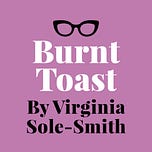


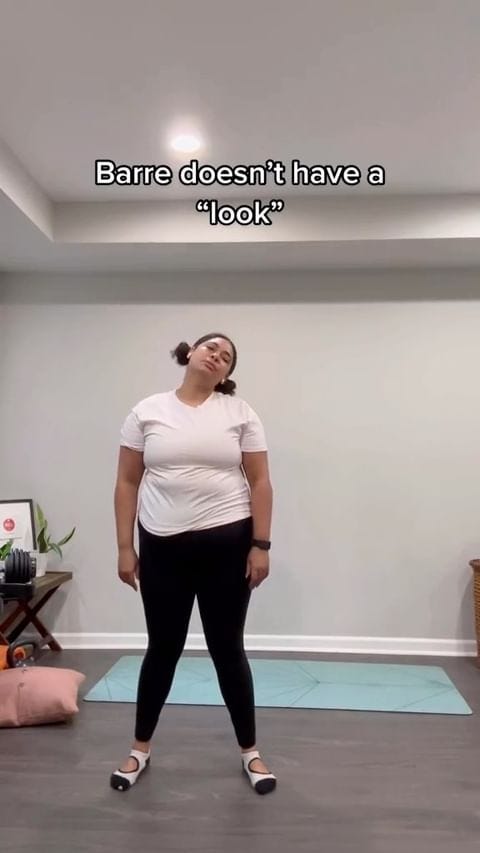

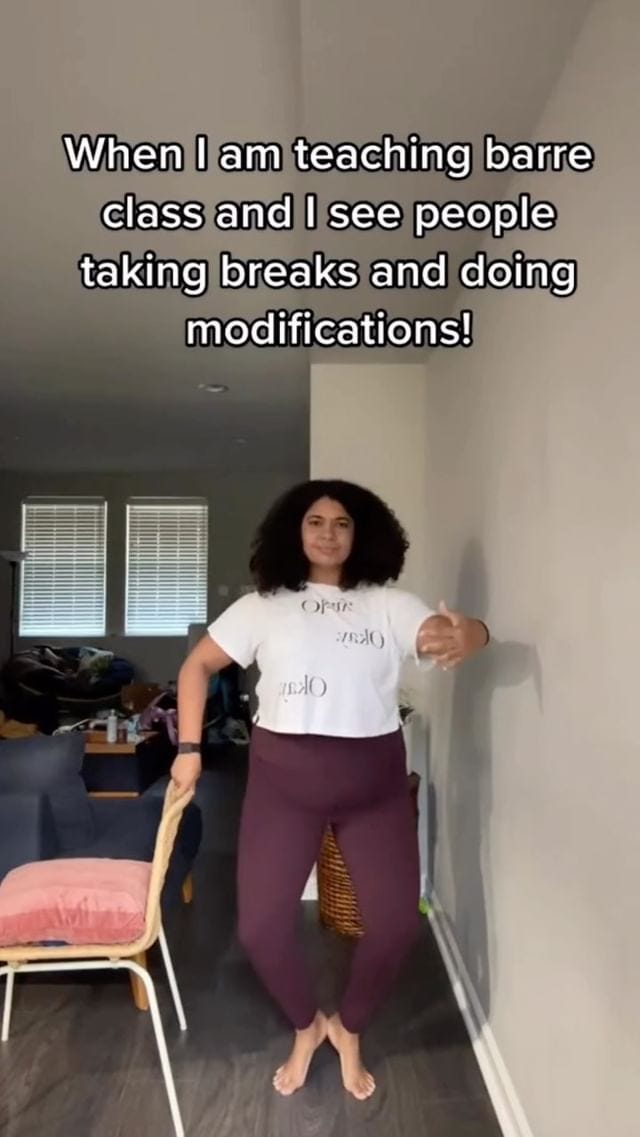

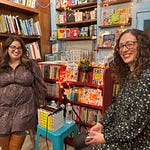
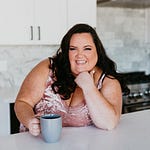
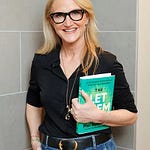
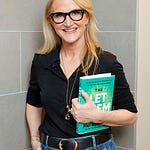
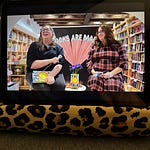



Share this post